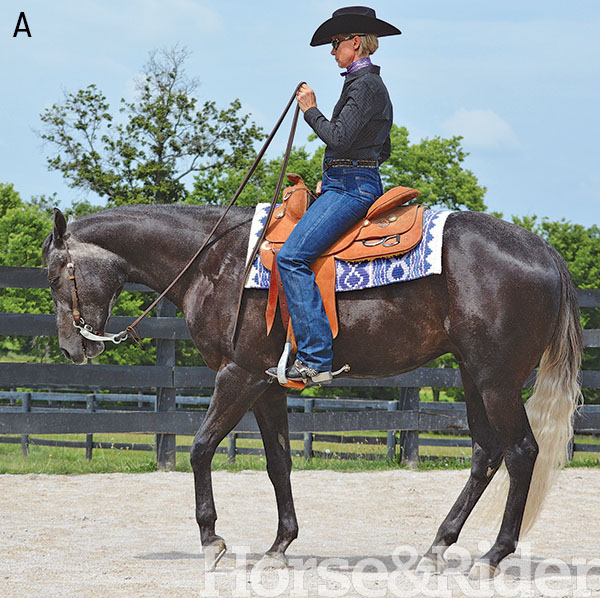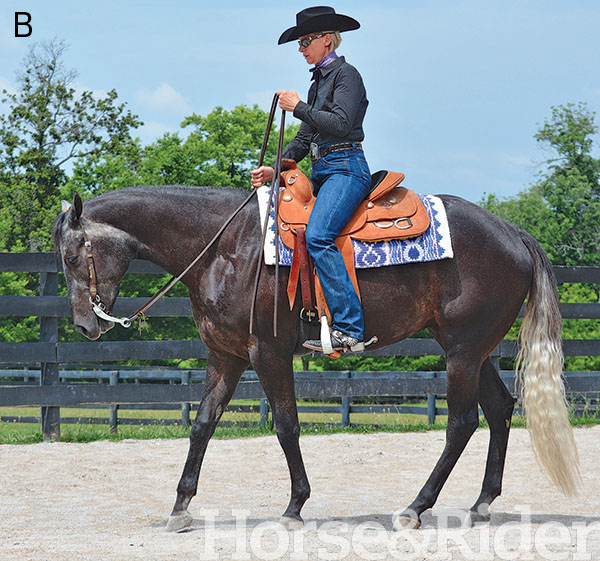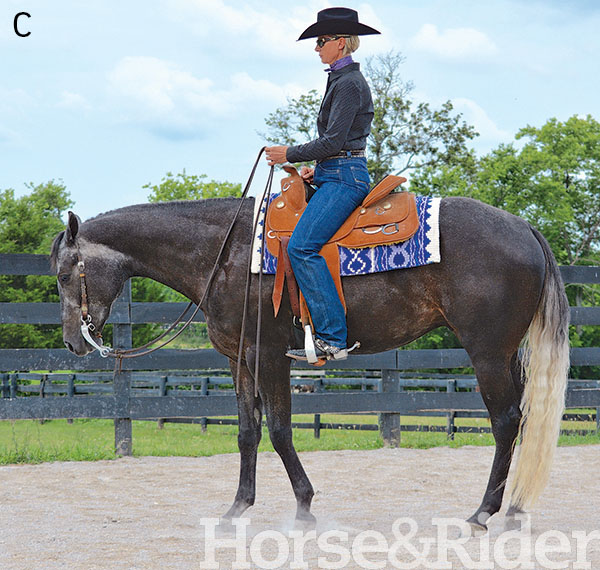When your horse listens and responds promptly to your cues, it boosts your confidence as a rider. This kind of responsiveness must be cultivated, however, and you do that by knowing when and how to reinforce a cue. I’m going to explain this concept, using a request for a back-up as an example.
Why you need this. As a trainer I’ve noticed many riders don’t realize they should be reinforcing their cues as necessary. When their horse doesn’t respond as he should, they overlook it, thinking, “He’ll do better next time.” But whenever you’re working with your horse, you’re training him, whether you realize it or not. You’re either teaching him that a lackluster response is OK (by letting him get away with it), or teaching him that a crisp, correct response is what’s required.
How it works. Proper cueing goes like this: You give your horse the cue, allowing a reasonable (for that cue) reaction time for him to respond. If he doesn’t give what you’ve asked for in that timeframe, you follow through with a reinforcement that makes sense for that cue. What do I mean by “makes sense”? For example, if your horse won’t go forward, you wouldn’t use backing up as reinforcement, as that’s the opposite of going forward. The goal isn’t to punish your horse; it’s to teach him to want to do what you’ve just asked, promptly and correctly.



How to reinforce. Let’s use the example of cueing for a back-up. (The general principles I explain will apply to any cue request.) You’ve asked your horse to back up by drawing the reins back and up a bit in a soft cue. But even after a heartbeat of response time (what you’d expect for this cue), he hasn’t responded. Pretty soon your hand is up in the air, approaching your chest. Now your horse is finally backing up, so you think, “OK, fine.” But it isn’t fine. You must draw the line so that your horse learns he must respond when your hand gets “here,” not all the way up “there.”
The reinforcement is to grasp the reins farther down and pull a bit more sharply to insist he respond as he should. How much sharper? Every horse is different; you must find what works for your horse without overdoing it. In other words, at what point does he pay attention and respond?
After he responds to the reinforced cue, go back and ask again with the original soft cue. This is key because it’s how your horse learns that if he responds promptly to the softer cue, he doesn’t get the sharper one. You’ll be amazed how quickly your horse “gets it” if you’re extremely consistent in this.
Robin Gollehon owns and operates Gollehon Quarter Horses in Versailles, Kentucky. She’s an American Ranch Horse Association judge, AQHA Professional Horseman, and Intercollegiate Horse Show Association coach with over 100 world and national titles. She specializes in Western pleasure, ranch riding, and yearling longe line. Thanks to Julie Screws, owner of Cowboys Are Good, the AQHA gelding in the photos, a son of Gollehon’s multiple world champion stallion Good Cowboy Margarita (gollehon.com).

